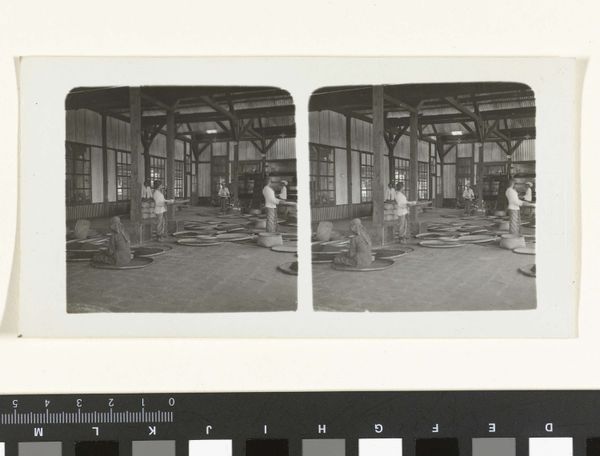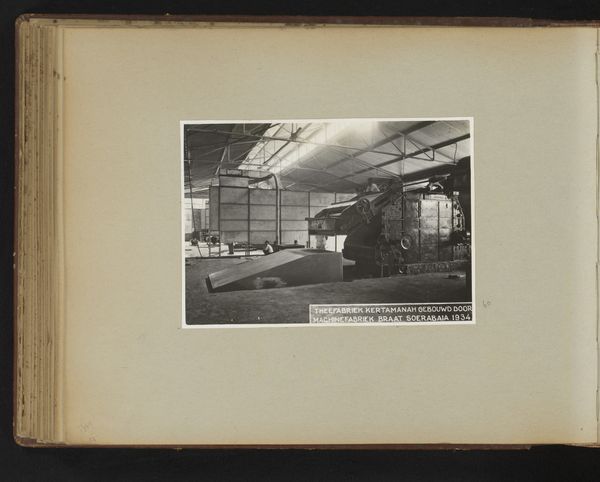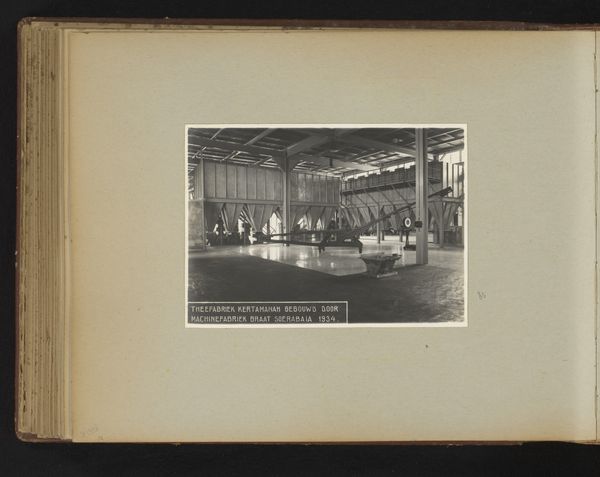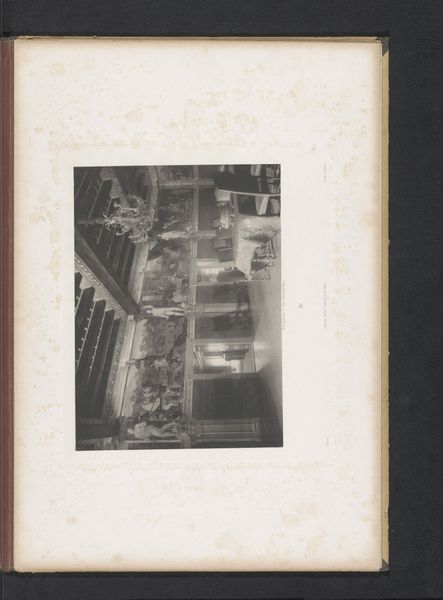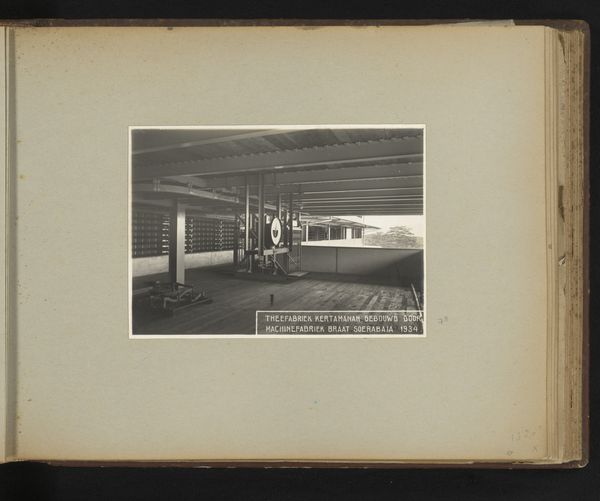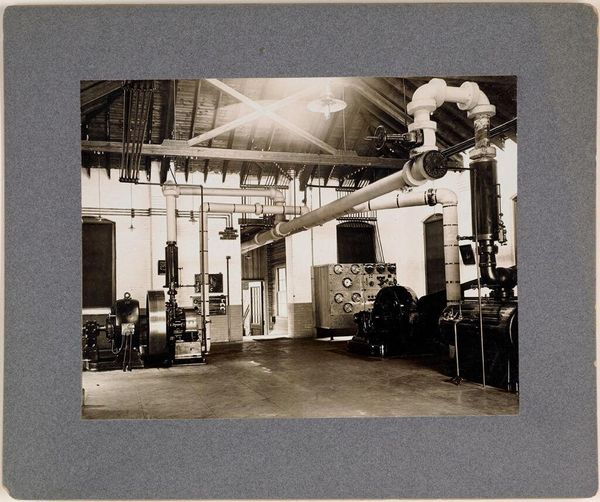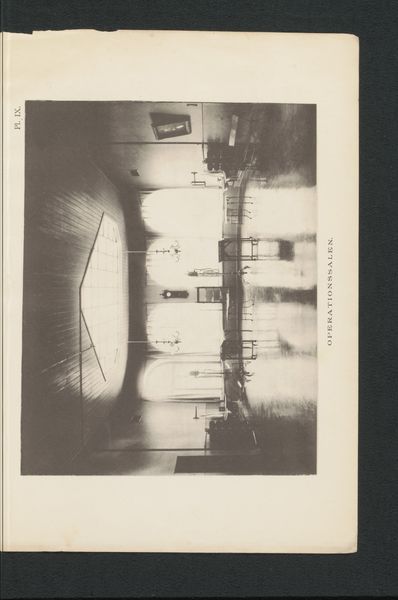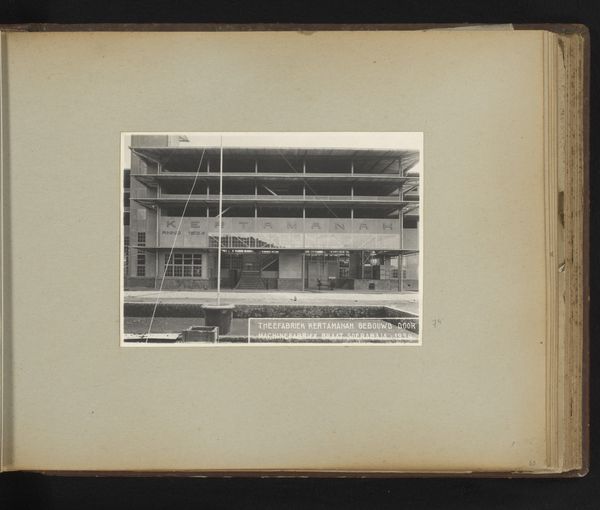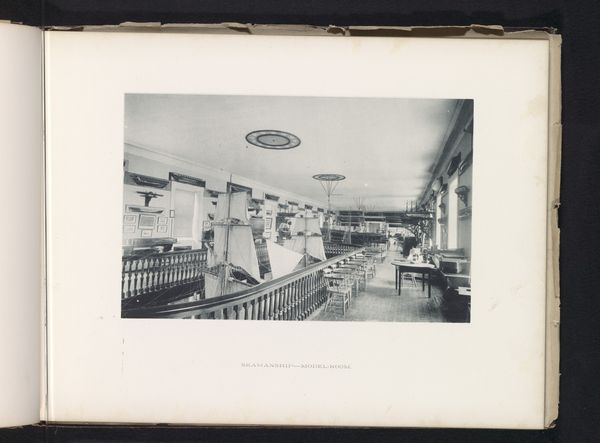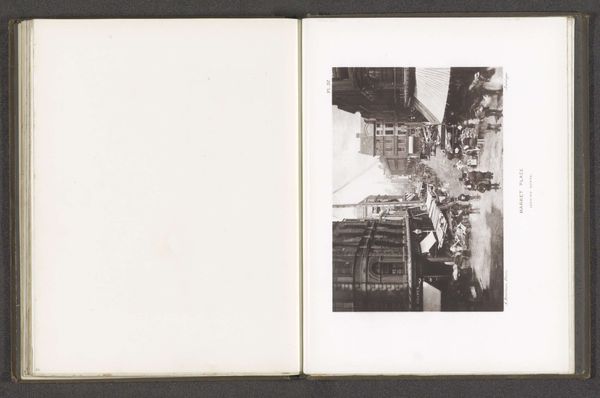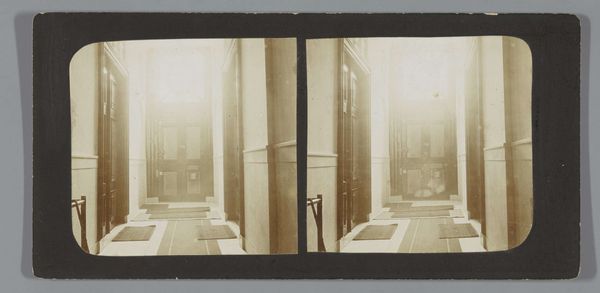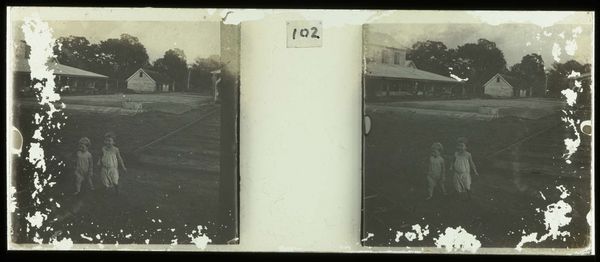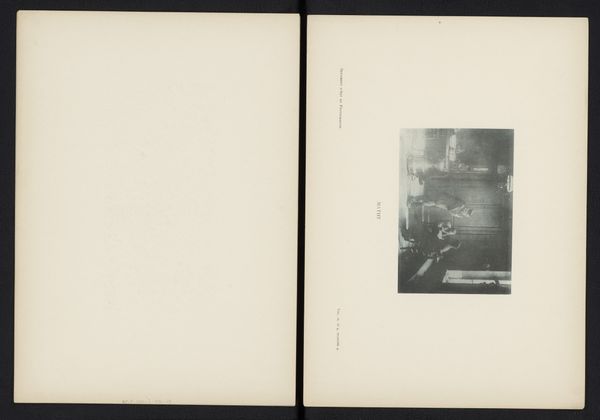
print, photography
# print
#
landscape
#
photography
#
realism
Dimensions: height 76 mm, width 152 mm
Copyright: Rijks Museum: Open Domain
Curator: This intriguing photographic print is entitled "Drying Tea in a Factory Hall," dating somewhere between 1900 and 1935. Editor: The moment I saw this, I thought, “Wow, the light!” It’s all about the light flooding through the skylights and casting these stark shadows across the factory floor. It’s strangely beautiful for such an industrial scene. Curator: Yes, the composition draws attention to labor and industry at the beginning of the 20th century. What can be lost when viewing it is the reality of colonial exploitation when examining landscapes as benign as this one, when tea plantations, such as these, thrived through oppressive systems. Editor: Absolutely. The history hidden in that tea. The quiet hum of the machinery is doing more than drying tea, it's creating and extending colonial power dynamics. And the people almost fade into the background. The soft grey tones of the photograph render the people secondary. It makes me wonder about their experiences. Curator: The space is sparse. We also need to examine how gender and race intersect here. Who occupies which roles? Is this gendered labor? The very act of choosing this perspective in this place becomes an ideological stance. What are your thoughts on its realism as a style? Editor: I appreciate the photo’s detail and it feels very “of the moment,” a specific slice of time. I like how the architecture – the beams, the supports – creates a strong geometric framework. But, what’s rendered is still the human element to industry even if blurred, not machines entirely dominating the visual space. It makes me curious to smell the work. Curator: It is a sobering and complicated glimpse. Photography freezes a single moment and serves to remind of us the ever shifting reality of exploitation and progress. Editor: Exactly! On the one hand, it feels very distant, like a scene from a sepia-toned dream, but when you start to really look, you remember these were peoples' lives and real back then as much as ours is now.
Comments
No comments
Be the first to comment and join the conversation on the ultimate creative platform.
